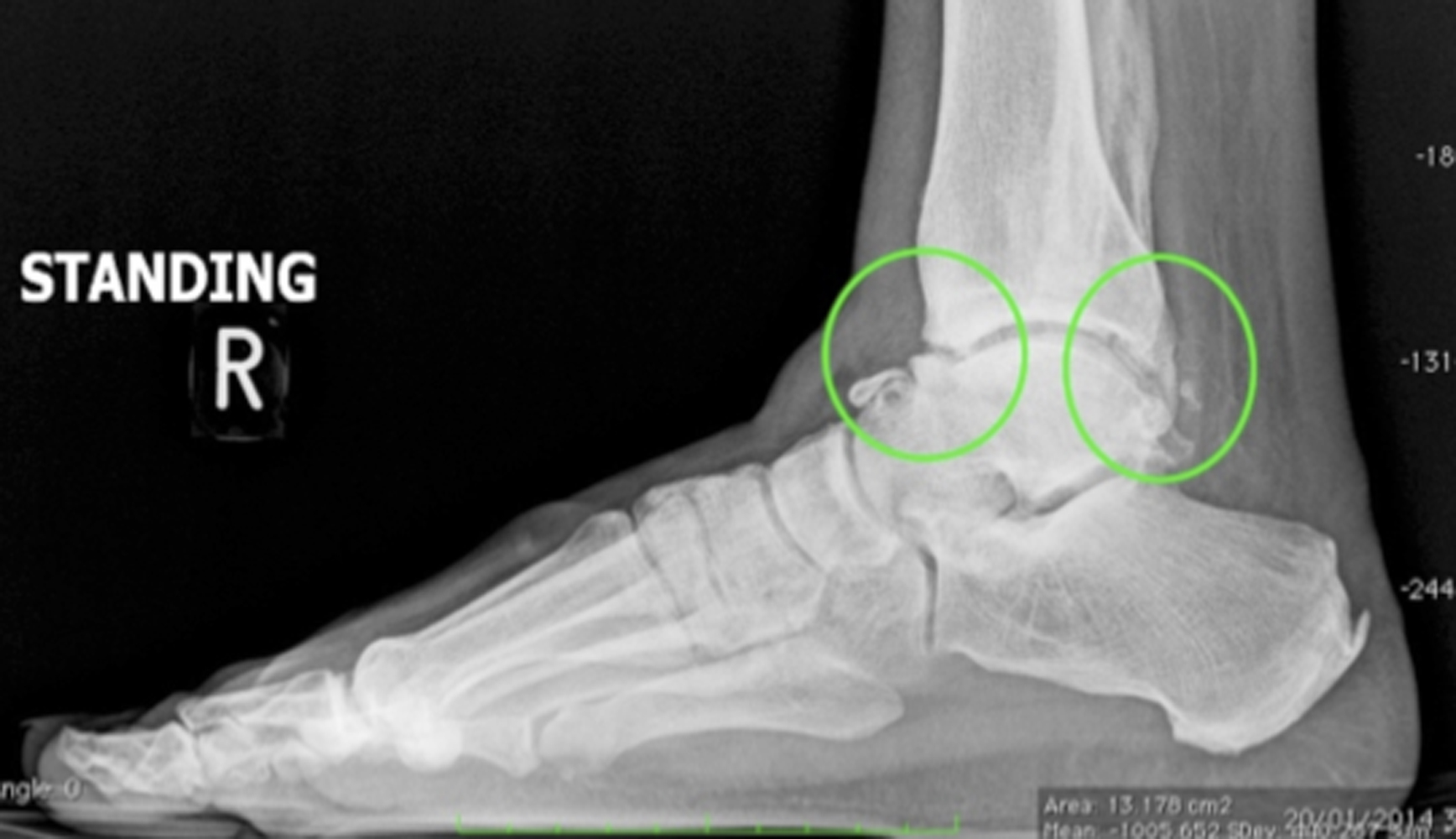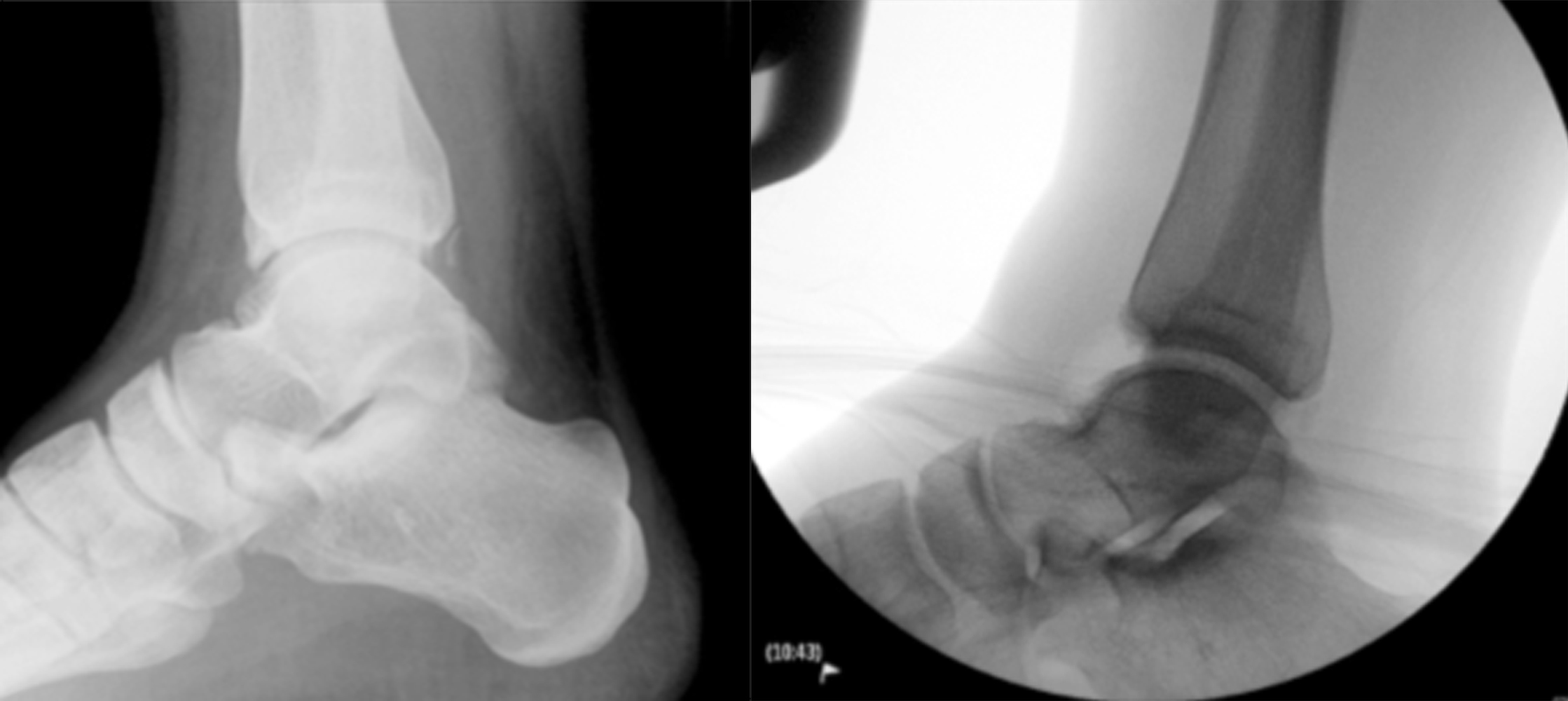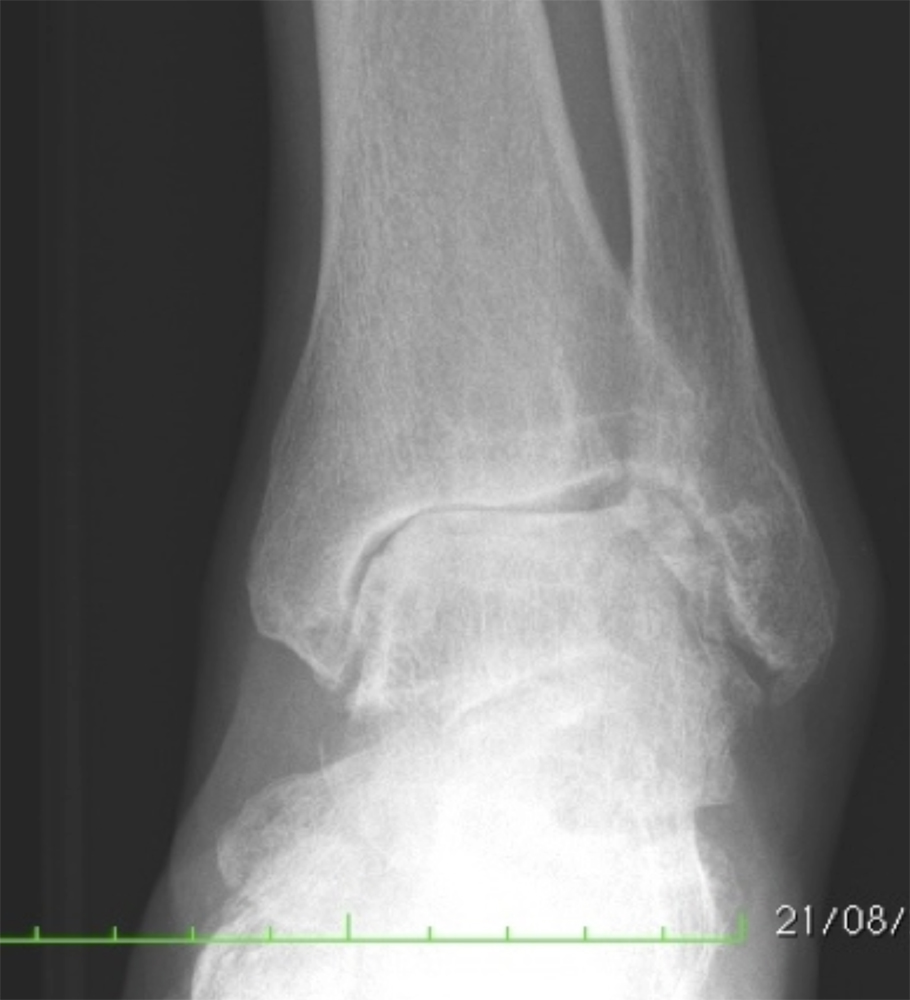Chronic Pain After Ankle Injury
Chronic Pain After Ankle Injury
reviewed by Dr SW KONG
LAST UPDATE: 2020 Aug 24th
Ankle injuries are one of the most common sports injuries, accounting for 10-20% [1] of injuries in different sports.
Ankle injuries can be divided into:
• soft tissue (ligamentous/joint capsule) injury
• bone injury (fracture/contusion)
• combined
Soft tissue injuries (ankle sprain) are far more common than fractures (80% vs. 10%) [2]. In USA [3] there are about 660,000 ankle sprains (2.15 per 1000 person-year) every year and in UK [4] they are estimated 300,000 new ankle sprains each year, and 42,000 are classified as severe.
Most ankle sprains heal without persistent pain or chronic disability [5,6] after conservative management (RICE and physiotherapy), but 20-40% of patients have persistent problems.
Two common sources of chronic pain and disability are ankle impingement and persistent ankle instability.
Ankle Impingement
Ankle impingement is defined as entrapment of an anatomic structure that leads to pain and decreased range of motion of the ankle [7]. It can be classified according to its location (such as anterior, posterior, medial, lateral or combined location) or structure (such as osseous/osteophyte, soft tissue or combined structures).
 Fig. 1 Showing both anterior and posterior impingement (green circle). |
People usually have the following symptoms:
• Pain
- anterior and midfoot foot
- radiate to the lateral or medial malleolus
- more diffuse initially
- localising to the anterior ankle joint over time
- typical history of inversion ankle injury
- inability to run
• Stiffness
• Swelling
• Subjective feeling of blocking on dorsiflexion
• Exacerbated by activity
- worse climbing stairs
- prolonged standing
- walking
• Giving way
• Patients with ligamentous impingement (AITFL) suffer from popping sensations and aggravation of pain with dorsiflexion and eversion
Standard X-ray views are only 30-40% sensitive in detecting anterior ankle osteophytes, but, when combined with a special (but easily performed) oblique view [8], the sensitivity increases to about 85%.
MRI is important not only confirm the diagnosis, but also to exclude the other potential causes of ankle pain (such as chondral or osteochondral lesion of the talus or tibia and tendinitis).
Most impingement (both osseous and soft tissue) can be treated non-surgically first, by: a course of antiinflammatory medication; rest; temporary immobilisation with a cam walker; physiotherapy; shoe modification; lifestyle and activity modification.
 Fig. 2 Before ankle arthroscopic cheilectomy and after cheilectomy |
However if non-surgical method does not relieve the symptoms after 6 months, then surgery is recommended.
Ankle arthroscopy (either anterior, posterior and combined) is well established, both in technique [9,10,11] and principle. The advantages of arthroscopic surgery to open surgery are fewer complications and quicker recovery.
Persistent Ankle Instability
Another common cause of chronic ankle pain after injury is ankle instability. Chronic ankle instability refers to repetitive episodes of instability resulting in the recurrent ankle sprains [12].
When the ankle is very unstable and fails physiotherapy, surgery is indicated. Arthroscopic ligament repair/reconstruction is the preferred choice to restore the ankle stability.
Studies show that there are several intra-articular conditions associated with chronic ankle instability, which, if left untreated, will affect the outcome of the ligament reconstruction, so they should be treated arthroscopically at the time of the ligament operation.
 Fig. 3 Chronic ankle instability with tilting of the talus, osteophyte formation and narrowing of the ankle joint. |
Reference
1. Daniel Tik-Pui Fong, Patrick Shu-Hang Yung and Kai-Ming Chan etal; A Systematic Review on Ankle Injury and Ankle Sprain in Sports. Sports Med 2007; 37 (1): 73-94
2. Daniel Tik-Pui Fong, Patrick Shu-Hang Yung, Kai-Ming Chan etal; Sport-related ankle injuries attending an accident and emergency department Injury, Int. J. Care Injured (2008) 39, 1222—1227
3. Captain Brian R. Waterman, MD, Major Brett D. Owens, MD; The Epidemiology of Ankle Sprains in the United States. J Bone Joint Surg Am. 2010;92:2279-84
4. Ferran NA, Maffulli N; Epidemiology of sprains of the lateral ankle ligament complex. Foot Ankle Clin. 2006;11:659-662.
5. Bassett FH, Gates HS, Billys JB, et al; Talar impingement by the anteroinferior tibiofibular ligament. A cause of chronic pain in the ankle after inversion sprain. J Bone Joint Surg Am 1990;72:55
Copyright ©2017 Asia Medical Specialists Limited. All rights reserved. |
